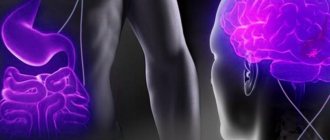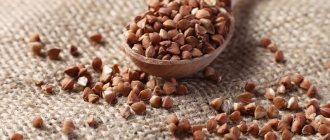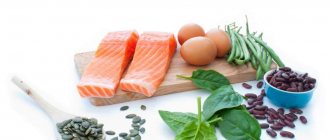Carbohydrates are organic chemical compounds made of carbon, hydrogen and oxygen atoms. They are divided into simple and complex. Depending on what type of carbohydrate you are dealing with, you will be able to determine the effect of a given carbohydrate on your post-meal glycemic levels.
Carbohydrates are the main source of energy for our body. We can find them in almost any product. Today we will talk about simple carbohydrates or, as they are also called, monosaccharides - sucrose, fructose, etc. There is nothing beneficial in them for diabetics, so you need to be very careful with them or even completely exclude them from your diet.
Read more about simple carbohydrates for diabetes below in the articles I collected on this topic.
Simple and complex carbohydrates. Product table
Carbohydrates are one of the types of nutrients necessary for the functioning of the human body. They are necessary to provide the body with energy. The amount of carbohydrates depends on physical activity, while the part of these substances that is not used leads to an increase in cholesterol in the blood and is converted into fat reserves.
Why do people need carbohydrates?
- they are ideal for providing energy for all life processes of the human body;
- they are necessary for the functioning of the brain;
- it is a building material for amino acids, enzymes, nucleic acids, immunoglobulins (which are responsible for immunity);
- Unusable carbohydrates accumulate in the body as fat.
According to the splitting process, they can be divided into two types:
- complex;
- simple or easily digestible.
Complex
These are polysaccharides based on starch and cellulose. They are found in grains, legumes and some types of vegetables (beets, potatoes, carrots, etc.), seeds, and nuts. They promote digestion and provide a feeling of fullness for a long time.
Simple
These are monosaccharides and disaccharides. Their basis is glucose and fructose. They are found in milk, fruits, confectionery and some vegetables. Simple carbohydrates have a simpler structure, so they are quickly processed in the body.
Lack of physical activity leads to an increase in blood sugar, which then drops sharply and causes hunger. In turn, unused carbohydrates turn into fat. At the same time, their deficiency causes fatigue and drowsiness.
Important! Why do simple carbohydrates make a person gain weight? I’ll try to simply answer this question without scientific phrases.
Easily digestible carbohydrates cause the production of the hormone insulin, which in turn triggers the processes of the body’s structure, while the breakdown process stops. In other words, as long as insulin is present in the blood, we cannot break down fat, but only build the body.
Moreover, if the building material is not consumed by the body in the form of energy, it is deposited in it in the form of fat reserves. Insulin is by nature an anabolic or in other words a building hormone. When we eat sweets, the body produces insulin.
Which leads to a slowdown in the weight loss process and begins the building process. Insulin loves a boost, so a couple of hours after a sweet meal, you crave something sweet again. The body requires a continued supply of insulin, accordingly, the structural processes continue, and the breakdown of fats is inhibited.
Attention! This process is reminiscent of drug addiction. Therefore, if you do not break this circle, you will definitely gain extra pounds. Now you understand the important role carbohydrates play in losing weight. Your task is to find out how many carbohydrates you get daily.
A food diary will be very helpful in this matter, where you can record and track the foods you eat and drink. In general, a food diary is an indispensable tool for monitoring your eating behavior, and this is a key point in organizing proper, healthy nutrition.
Easily digestible carbohydrates cause the production of the hormone insulin, which in turn triggers the processes of the body’s structure, while the breakdown process stops.
In other words, as long as insulin is present in the blood, we cannot break down fat, but only build the body. Moreover, if the building material is not consumed by the body in the form of energy, it is deposited in it in the form of fat reserves.
Insulin is by nature an anabolic or in other words a building hormone. When we eat sweets, the body produces insulin. Which leads to a slowdown in the weight loss process and begins the building process.
Insulin loves a boost, so a couple of hours after a sweet meal, you crave something sweet again. The body requires a continued supply of insulin, accordingly, the structural processes continue, and the breakdown of fats is inhibited. This process is reminiscent of drug addiction.
Expert opinion
Guseva Yulia Alexandrova
Specialized endocrinologist
Therefore, if you do not break this circle, you will definitely gain extra pounds. Now you understand the important role carbohydrates play in losing weight. Your task is to find out how many carbohydrates you get daily.
A food diary will be very helpful in this matter, where you can record and track the foods you eat and drink. In general, a food diary is an indispensable tool for monitoring your eating behavior, and this is a key point in organizing proper, healthy nutrition.
Product table
| Simple | Complex |
| Honey | Cereals and pasta |
| Sugar | Peas |
| Jams and preserves | Lentils |
| Jam | Beans |
| Carbonated drinks | Beet |
| confectionery | Potato |
| White bread | Carrot |
| Sweet fruits | Pumpkin |
| Sweet vegetables | Cereals and cereals |
| Various syrups | Whole wheat bread |
Summarize. Simple and complex carbohydrates are very important for the human body, both of them, as they participate in basic life processes. But you must remember that carbohydrates need to be burned, otherwise they will be stored in your body as fat reserves.
Easily digestible foods should be limited, as they slow down the breakdown process and participate in the building process, that is, they lead to weight gain. They can also develop dependence on this product. Find strength in yourself and try to control your intake of simple carbohydrates. Include porridge, berries, and fruits in your menu. Drink freshly squeezed juices, herbal tea, and various smoothies.
Polysaccharides
Polysaccharides are complex compounds of a large number of monosaccharides. Digestible polysaccharides are called starch, these include starch, inulin, glycogen.
During absorption by the body, starch polysaccharides are broken down into simple sugars. This process takes a long time and occurs mainly in the intestines, which is why starch polysaccharides are often called “slow carbohydrates”. Their share in the daily amount of digestible carbohydrates should be about 75–80%. Starch accounts for the bulk of digestible polysaccharides. The largest amount of this substance is found in products made from wheat flour (pasta, bread), cereals, potatoes and legumes.
Carbohydrates: simple and complex
The reserves of carbohydrates in the form of glycogen in the human body are approximately 500 g. The bulk of it (2/3) is located in the muscles, 1/3 in the liver. Between meals, glycogen breaks down into glucose molecules, which mitigates fluctuations in blood sugar levels.
Tip! Glycogen stores without carbohydrates are depleted in about 12-18 hours. In this case, the mechanism for the formation of carbohydrates from intermediate products of protein metabolism is activated.
This is due to the fact that carbohydrates are vital for the formation of energy in tissues, especially the brain. Brain cells obtain energy primarily through the oxidation of glucose.
Carbohydrate deficiency
Chronic carbohydrate deficiency leads to the depletion of glycogen reserves in the liver and the deposition of fat in its cells. This can cause so-called fatty liver degeneration and disruption of its functions.
When there is a deficiency of carbohydrates in food, tissues and organs use not only proteins, but also fats to synthesize energy. With increased breakdown of fats, metabolic disturbances may occur associated with the accelerated formation of ketones (acetone, known to everyone, belongs to this class of substances) and their accumulation in the body.
Excessive formation of ketones with increased oxidation of fats and partially proteins can lead to “acidification” of the internal environment of the body and poisoning of brain tissue, up to the development of acidotic coma with loss of consciousness.
Excess carbohydrates
An excess of carbohydrates in food causes an increase in the level of insulin in the blood and promotes the formation of fat, and a sharp reduction in the calorie content of food by reducing carbohydrates in the diet can lead to disruption of protein metabolism.
The most important reason for the increase in fat formation is a sharp increase in blood glucose after a large intake of carbohydrate-rich foods. If, after a light breakfast, a person fasts during the day, and in the evening eats an afternoon snack, lunch and dinner in one sitting, the body is forced to fight “poisoning” with carbohydrates - a sharp increase in the concentration of glucose in the blood.
Advice! In order for glucose from the blood to enter tissue cells, insulin is needed, and an increase in its level in the blood stimulates the synthesis of fats. True, the mechanism for the emergency conversion of carbohydrates into fat begins to work only with a simultaneous and sufficiently large (more than 500 g) intake of quickly digestible carbohydrates into the body.
It is enough to eat a small loaf of jam, washed down with sweet tea. This type of diet in most cases leads not only to gastritis and other diseases, but also to the accumulation of excess fatty tissue.
Besides insulin, other hormones regulate carbohydrate metabolism. Hormones of the adrenal cortex, the so-called glucocorticoids, increase the synthesis of glucose from amino acids in the liver. This process is also stimulated by the hormone glucagon, which, like insulin, is produced by the pancreas. Glucocorticoids and glucagon act opposite to insulin.
Carbohydrate norm
Normally, carbohydrates should provide 50-60% of the calorie content of food. It is impossible to exclude them from the diet, but they are still “to blame” for the accumulation of excess weight. Obviously, one should look for some ways that will allow, without excluding carbohydrates from food, to limit their conversion into fat.
Types of carbohydrates
Carbohydrates can be divided according to their chemical structure into simple carbohydrates (monosaccharides and disaccharides) and complex carbohydrates (polysaccharides).
Important! Glucose is the most important of all monosaccharides, since it is the structural unit of most food di- and polysaccharides. During the metabolic process, they are broken down into individual molecules of monosaccharides, which, through multi-stage chemical reactions, are converted into other substances and are ultimately oxidized to carbon dioxide and water - used as “fuel” for cells.
Glucose is a necessary component of carbohydrate metabolism. When its level in the blood decreases or its concentration is high and it is impossible to use, as happens in diabetes, drowsiness occurs and loss of consciousness may occur (hypoglycemic coma).
Glucose “in its pure form”, as a monosaccharide, is found in vegetables and fruits. Grapes are especially rich in glucose - 7.8%, sweet cherries - 5.5%, raspberries - 3.9%, strawberries - 2.7%, plums - 2.5%, watermelon - 2.4%. Among vegetables, pumpkin contains the most glucose - 2.6%, white cabbage - 2.6%, and carrots - 2.5%.
Glucose is less sweet than the most famous disaccharide, sucrose. If we take the sweetness of sucrose as 100 units, then the sweetness of glucose is 74 units.
Fructose is one of the most abundant carbohydrates in fruits. Unlike glucose, it can penetrate from the blood into tissue cells without the participation of insulin. For this reason, fructose is recommended as the safest source of carbohydrates for diabetics.
Some of the fructose enters the liver cells, which convert it into a more versatile “fuel” - glucose, so fructose can also increase blood sugar, although to a much lesser extent than other simple sugars.
Expert opinion
Guseva Yulia Alexandrova
Specialized endocrinologist
Fructose is easier to convert into fat than glucose. The main advantage of fructose is that it is 2.5 times sweeter than glucose and 1.7 times sweeter than sucrose. Its use instead of sugar allows you to reduce your overall carbohydrate intake.
The main sources of fructose in food are grapes - 7.7%, apples - 5.5%, pears - 5.2%, cherries - 4.5%, watermelons - 4.3%, black currants - 4.2% , raspberries – 3.9%, strawberries – 2.4%, melons – 2.0%. The fructose content in vegetables is low - from 0.1% in beets to 1.6% in white cabbage.
Fructose is contained in honey - about 3.7%. It has been reliably proven that fructose, which has a significantly higher sweetness than sucrose, does not cause tooth decay, which is promoted by sugar consumption.
Important! Carbohydrates, simple carbohydrates, complex carbohydrates Galactose is not found in free form in foods. It forms a disaccharide with glucose - lactose (milk sugar) - the main carbohydrate of milk and dairy products.
Lactose is broken down in the gastrointestinal tract into glucose and galactose by the enzyme lactase. A deficiency of this enzyme leads to milk intolerance in some people. Undigested lactose serves as a good nutrient for intestinal microflora.
In this case, profuse gas formation is possible, the stomach “swells”. In fermented milk products, most of the lactose is fermented to lactic acid, so people with lactase deficiency can tolerate fermented milk products without unpleasant consequences.
In addition, lactic acid bacteria in fermented milk products suppress the activity of intestinal microflora and reduce the adverse effects of lactose. Galactose, formed during the breakdown of lactose, is converted into glucose in the liver.
Attention! With a congenital hereditary deficiency or absence of the enzyme that converts galactose into glucose, a serious disease develops - galactosemia, which leads to mental retardation.
The lactose content in cow's milk is 4.7%, in cottage cheese - from 1.8% to 2.8%, in sour cream - from 2.6 to 3.1%, in kefir - from 3.8 to 5.1% , in yoghurts - about 3%. A disaccharide formed by glucose and fructose molecules is sucrose.
The sucrose content in sugar is 99.5%. Sweet lovers know as well that sugar is “white death” as smokers know that a drop of nicotine kills a horse. Unfortunately, both of these truisms more often serve as a reason for jokes than for serious reflection and practical conclusions.
Tip! Sugar is quickly broken down in the gastrointestinal tract, glucose and fructose are absorbed into the blood and serve as a source of energy and the most important precursor of glycogen and fats. It is often called a “carrier of empty calories,” since sugar is a pure carbohydrate and does not contain other nutrients, such as vitamins and mineral salts.
Of the plant products, the most sucrose is contained in beets - 8.6%, peaches - 6.0%, melons - 5.9%, plums - 4.8%, tangerines - 4.5%. In vegetables, except beets, a significant sucrose content is noted in carrots - 3.5%. In other vegetables, the sucrose content ranges from 0.4 to 0.7%.
In addition to sugar itself, the main sources of sucrose in food are jam, honey, confectionery, sweet drinks, and ice cream. When two glucose molecules combine, maltose is formed - malt sugar. It contains honey, malt, beer, molasses and bakery and confectionery products made with the addition of molasses.
Complex carbohydrates
All polysaccharides present in human food, with rare exceptions, are polymers of glucose. Starch is the main digestible polysaccharide. It accounts for up to 80% of carbohydrates consumed in food.
The source of starch is plant products, mainly cereals: cereals, flour, bread, and potatoes. Cereals contain the most starch: from 60% in buckwheat (kernel) to 70% in rice.
Of the cereals, the least starch is contained in oatmeal and its processed products: oatmeal, Hercules oat flakes - 49%. Pasta contains from 62 to 68% starch, bread made from rye flour, depending on the type - from 33% to 49%, wheat bread and other products made from wheat flour - from 35 to 51% starch, flour - from 56 (rye) to 68% (premium wheat).
There is also a lot of starch in legumes - from 40% in lentils to 44% in peas. For this reason, dry peas, beans, lentils, and chickpeas are classified as legumes. Standing apart are soybeans, which contain only 3.5% starch, and soybean flour (10-15.5%).
Expert opinion
Guseva Yulia Alexandrova
Specialized endocrinologist
Due to the high starch content in potatoes (15-18%), in dietetics it is classified not as a vegetable, where the main carbohydrates are monosaccharides and disaccharides, but as a starchy product along with cereals and legumes.
In Jerusalem artichoke and some other plants, carbohydrates are stored in the form of a fructose polymer, inulin. Food products with the addition of inulin are recommended for diabetes and especially for its prevention (remember that fructose puts less strain on the pancreas than other sugars).
Glycogen – “animal starch” – consists of highly branched chains of glucose molecules.
It is found in small quantities in animal products (in the liver 2-10%, in muscle tissue - 0.3-1%).
Simple sugars
Simple sugars do not require additional breakdown, so they are absorbed by the body very quickly and almost completely. These are what are commonly called “fast carbohydrates.”
Simple sugars are divided into:
- monosaccharides (glucose, fructose, galactose);
- oligosaccharides (lactose, sucrose, maltose, raffinose).
The main role in human nutrition is played by sucrose and lactose; recently the role of fructose has increased. Sucrose is common table sugar. Fructose is a sugar found in honey and fruits (especially grapes).
Lactose is the so-called milk sugar. Its absorption is associated with the presence of the lactase enzyme in the gastrointestinal tract, which breaks down lactose. In the absence of lactase, milk is not digested, but this feature does not affect the digestion of fermented milk products. Some people have similar difficulties with the absorption of raffinose, which is rich in legumes and rye flour.
Once again about light carbohydrates
Simple and complex carbohydrates are integral sources of energy for the human body, which it uses as building material. These trace elements are responsible for the normal functioning of vital organs such as kidneys, liver, brain, etc.
Important! Carbohydrates are found in almost any food product. If you look at the table of their content in foods, you can find out exactly which carbohydrates and in what quantity you receive daily.
According to nutritionists, with proper nutrition, the total share of carbohydrates - both simple and complex - should account for about half of the total caloric content of the diet. In this case, excess carbohydrates are stored in the body as fat.
An excess of simple carbohydrates can lead to a constant feeling of hunger, which a person will try to suppress by snacking. Complex carbohydrates provide a feeling of fullness for a long time and also improve digestion.
To lose weight, many people almost completely eliminate carbohydrate-rich foods from their diet, which negatively affects their health. It is important not only to minimize carbohydrate intake, but to make a balanced diet.
Attention! To do this, you need to have complete information about which food products and in what quantities contain complex and simple carbohydrates, when and how best to include them in the menu.
Light carbohydrates - the list of products that contain them is quite wide - milk, fruits, and some types of vegetables. Almost all products with fast carbohydrates have a sweet taste - sugar, candies, cakes, cookies and other confectionery products, chocolate, honey, jam and marmalade, sweet drinks, etc.
Those who want to have a slim figure need to limit their consumption of such foods. The main simple carbohydrate is glucose. The normal level of glucose in a person’s blood must be constantly maintained, since the nutrition of the cells directly depends on this.
Insulin is responsible for delivering glucose into cells. This is a hormone produced by the pancreas that is designed to reduce glucose concentrations. When glucose levels exceed the body's needs, the excess is distributed to the liver, where it is stored as glycogen.
Advice! If glucose still continues to enter the body, then it is already transformed into fat - a kind of “canned” energy reserve. Sometimes this causes sugar levels to drop below normal levels and carbohydrate hunger to occur.
As a result, a person begins to consume sweets again - that is, this is a vicious circle, the consequence of which is obesity. A sharp increase or decrease in blood glucose levels can lead to sudden changes in mood, drowsiness and fatigue.
A decrease in level also causes a feeling of hunger. A diet consisting of foods with simple carbohydrates causes a person to constantly feel hungry. Such a diet quite quickly leads not only to the addition of extra pounds, but also to serious health problems.
What carbohydrates are needed for weight loss
Many of those who want to lose extra pounds perceive any carbohydrate foods as their enemies. But this is a fundamentally wrong approach, since human life is simply impossible without carbohydrates.
The main thing is to learn to understand which carbohydrates are best to include in your diet and which to limit. In fact, only simple carbohydrates are harmful to those losing weight, the entry of which into the body causes a sharp jump in glucose in the blood.
It is contraindicated to consume fast carbohydrates both when losing weight and when gaining muscle mass - they always have only a negative effect. Light carbohydrates pose a particularly great danger to your figure in the afternoon. Therefore, it is worth including them in the menu not only in limited quantities, but also exclusively for breakfast or lunch.
Indigestible polysaccharides
Indigestible polysaccharides are pectins, hemicellulose, cellulose, gum, lignin, etc. They are called dietary fiber. Dietary fiber is practically not digested by the body, but has a significant effect on the process of digesting food as a whole, ensures the absorption of other substances, and regulates intestinal motility. The main source of such polysaccharides are products of plant origin. The average person needs about 20 g of dietary fiber per day.
The absorption of carbohydrates is associated with the production of the pancreatic hormone insulin. With its deficiency, the use of glucose slows down, its level in the blood increases, which leads to diabetes mellitus. In this case, the amount of carbohydrates in the diet must be significantly reduced.
Foods containing large amounts of simple carbohydrates
The most common simple carbohydrates are:
- glucose (grape sugar or dextrose),
- fructose (levulose),
- galactose,
- sucrose (beet or cane sugar),
- lactose (milk sugar),
- maltose (malt sugar).
All sugars are absorbed equally well, but the rate of absorption from the intestines is different. This is of decisive importance for blood sugar levels after meals, and therefore vital for patients with diabetes. It is also necessary to consider the type of carbohydrates for those wishing to lose weight.
This is described in detail in the article “The hormone insulin. Why is it important for those trying to lose weight? Glucose is absorbed faster than others, fructose is absorbed slower. In addition, fructose has a different pathway of transformation in the body and does not require insulin secretion, so it can be consumed by patients with diabetes. Sucrose is broken down into glucose and fructose during digestion.
Content of glucose, fructose and sucrose in 100 g of the edible part of vegetables, fruits and berries
Product gluco for, g fruit for, g sugar for, g Product gluco for, g fructo for, g sugar for, g
| White cabbage | 2.6 | 1.6 | 0.4 | Plums | 3.0 | 1.7 | 4.8 |
| Potato | 0.6 | 0.1 | 0.6 | Cherries | 5.5 | 4.5 | 0.6 |
| Carrot | 2.5 | 1.0 | 3.5 | Apples | 2.0 | 5.5 | 1.5 |
| cucumbers | 1.3 | 1.1 | 0.1 | Oranges | 2.4 | 2.2 | 3.5 |
| Beet | 0.3 | 0.1 | 8.6 | Tangerines | 2.0 | 1.6 | 4.5 |
| Tomatoes | 1.6 | 1.2 | 0.7 | Grape | 7.8 | 7.7 | 0.5 |
| Watermelon | 2.4 | 4.3 | 2.0 | Strawberry | 2.7 | 2.4 | 1.1 |
| Pumpkin | 2.6 | 0.9 | 0.5 | Cranberry | 2.5 | 1.1 | 0.2 |
| Apricots | 2.2 | 0.8 | 6.0 | Gooseberry | 4.4 | 4.1 | 0.6 |
| Cherry | 5.5 | 4.5 | 0.3 | Raspberries | 3.9 | 3.9 | 0.5 |
| Pears | 1.8 | 5.2 | 2.0 | Black currant | 1.5 | 4.2 | 1.0 |
| Peaches | 2.0 | 1.5 | 6.0 |
Lactose is found in dairy products and is broken down in the intestines into glucose and galactose. In some people, the digestion of lactose is impaired due to the lack of the necessary enzyme, and after drinking milk, bloating and rotting processes occur in the intestines.
The body's need for carbohydrates should be covered 1/3 by simple and 2/3 by complex carbohydrates (starch). The rate of carbohydrate consumption depends on gender, age, nature of work, living conditions and other factors. It is useless to name average numbers, because... for different people they differ by 2-4 times.
Excessive consumption of simple carbohydrates leads to overstrain of the insular apparatus and metabolic disorders. At the same time, cholesterol synthesis increases, excess carbohydrates turn into fat, which contributes to the development of obesity, atherosclerosis and other diseases.
With a deficiency of carbohydrates in the diet, there is an increase in protein consumption, the formation of under-oxidized products of fat metabolism (ketone bodies) and the development of acidosis.
Learn more about simple carbohydrate foods
To accurately create a menu, you need to know the substances that we consume with food. Including simple carbohydrates, the list of which will help in selecting healthy foods. It is also worth familiarizing yourself with the principle of action of these substances.
Description of simple carbohydrates
What are simple carbohydrates? The term "simple carbohydrates" is a popular one. Often the term “fast carbohydrates” is used instead. These concepts are equivalent. This group of substances includes the following carbohydrates: sucrose, glucose, fructose.
Attention! It is known that in many cases their use provokes excessive weight gain. How does glucose work? The role of glucose is to regulate normal carbohydrate metabolism in the body. Also, its activity allows the brain to work normally, receiving enough energy.
You need to eat foods high in glucose in a reasonable amount. These include: pumpkin, grapes, watermelon, cherries, raspberries, sweet cherries, and other products. Fructose can be considered a common fruit carbohydrate.
It is recommended for people with diabetes. This substance can gently increase blood sugar. The sweet taste of this carbohydrate is much more intense than that of sugar. It is believed that by introducing fructose into food, a general reduction in the content of harmful carbohydrates in the diet is achieved.
Tip! The carbohydrate called sucrose contains no nutrients. Once it enters the body, it is immediately broken down within the stomach and intestines. The resulting substances are transported to certain areas to form adipose tissue.
When talking about the class of simple carbohydrates, they often mean sugar. So many foods contain simple carbohydrates; the list would be very long if we tried to name all the possible options. We will indicate the most common and rich of them.
These are healthy products, but they contain a certain percentage of sucrose. This is the whole range of confectionery products, natural honey, sweetened drinks, jam, ice cream. A number of vegetables and fruits also contain products containing sucrose.
Expert opinion
Guseva Yulia Alexandrova
Specialized endocrinologist
These include: beets, tangerines, peach, carrots, plums, melon. What spoils the figure? The worst effects on your figure are dishes prepared with granulated sugar. Vivid examples of such food are: sweets, rolls, cookies, cakes.
The general negative opinion of nutritionists about simple carbohydrates was formed due to the special behavior of substances from these products. After entering the stomach, they are split into components. The bulk of the resulting substances is sugar.
It is absorbed into the blood and provokes the production of a significant amount of insulin. This fact causes active growth of adipose tissue. It is noteworthy that the feeling of hunger with such a meal occurs after a short period of time.
Fast carbohydrates in nutrition Features of fast carbohydrates A characteristic feature of simple carbohydrates, often represented by disaccharides and monosaccharides, is rapid absorption. This happens because they are based on fructose, glucose.
Important! We use them together with sweet pastries, individual vegetables or even milk. These substances cannot behave differently due to their simplified structure. It is especially harmful to receive a large amount of fast carbohydrates against the backdrop of an immobilized lifestyle.
The rapid processing of eaten foods under conditions of low mobility causes a rise in blood sugar. When this indicator drops, you can feel severe hunger. At this time, unclaimed carbohydrates are transformed into fat.
But with all this, it is necessary to note the opposite feature. We feel constant fatigue and even drowsiness from a lack of carbohydrates. Simple carbohydrates: their excessive consumption leads to weight gain Simple carbohydrates: to eat or not?
In any case, their use should be kept within reasonable minimum limits. To successfully limit yourself to certain foods, you need to be fully aware of their dangers. Easily digestible carbohydrates, if consumed in large quantities, push us towards gaining excess weight.
Advice! This mass is then very difficult to remove, and in some cases it is impossible to reduce it. Products that are largely saturated with fast carbohydrates cause real addiction. Therefore, it is difficult to give them up completely or consume strictly limited quantities.
Given a reasonable approach to nutrition, it is necessary to calculate the consumption of simple carbohydrates. The menu can be diversified with many other healthy products, such as delicious berries, healing herbal teas, various fruits, freshly squeezed juices, and healthy cereals.
All this also needs to be eaten and drunk in reasonable portions. Content of simple carbohydrates in food Let's list the products that contain fast carbohydrates. Next to each name we will indicate the percentage of sugars.
The list below shows fruits, berries, and vegetables in which a significant proportion of monosaccharide is found. In other words, they contain pure glucose:
- Carrots and plums – 2.5% each
- Pumpkin and white cabbage – 2.6% each
- Grapes – 7.8%
- Watermelon – 2.4%
- Cherries and sweet cherries – 5.5% each
- Strawberry – 2.7%
- Raspberry berry – 3.9%
Fructose is found in our food, and its concentration differs significantly in different products:
- Beet – 0.1%
- White cabbage – 1.6%
- Sweet cherries and sour cherries – 4.5% each
- Pear – 5.2%
- Melon – 2.0%
- Natural honey – 3.7%
- Strawberry – 2.4%
- Black currant berry – 4.2%
- Grapes – 7.7%
- Raspberry berry – 3.9%
- Apple – 5.5%
- Watermelon – 4.3
Lactose is included in the following foods:
- Cow's milk – 4.7%
- Quality yogurt – 3%
- Natural cottage cheese – no less than 1.8%; no more than 2.8%
- Kefir (depending on fat content) – 3.8% -5.1%
- Natural sour cream – no less than 2.6; no more than 3.1%
Some plant foods contain a high percentage of sucrose:
- Plum – 4.8%
- Melon – 5.9%
- Mandarin – 4.5%
- Peach – 6%
- Beet – 8.6%
- Carrot – 3.5
In general, vegetables other than those mentioned – 0.4%-0.7% Sugar – 99.5%
Carb free
Of course, there are foods that contain no carbohydrates at all. These are protein foods such as vegetable oil, any meat, animal by-products, fish, seafood, black caviar, red caviar, unsweetened drinks coffee or tea.
It is better to focus your diet on complex carbohydrates. They satiate for a long time and improve digestion. And at the same time we get an impressive energy reserve.
To avoid over-consuming simple carbohydrates, a list of them along with their calorie content should be kept before your eyes at all times. When compiling a diet, you should take into account all types of vital substances and try to consume them in acceptable quantities.
Fast carbohydrates - what they are and what they eat with
Carbohydrates, which consist of a small number of molecules, no more than two, are absorbed by the human body at a very high speed and are called fast or simple carbohydrates. Most often they have a sweet taste and quickly dissolve in water.
Advice! Fast carbohydrates have a high glycemic index. This suggests that it only takes a couple of minutes for them to turn into blood sugar. Once this happens, there will be a surge of energy and insulin levels will increase.
Man has been evolving for several thousand years, but despite this, his body has hardly changed, as well as his metabolism. However, the food that people consume has changed. It is not easy to find fast carbohydrates in nature.
To obtain sugar in the amount in which it is found in a liter of carbonated drink, you need to eat more than one meter of sugar cane. In addition to sugar, simple carbohydrates are naturally contained in honey, but its use by our ancestors was limited.
Why should you not consume fast carbohydrates?
As mentioned above, simple carbohydrates do not take much time to digest. After absorption, blood sugar levels rise. To use excess sugar, the body synthesizes insulin, which uses these calories at the moment or converts them into subcutaneous fat.
Expert opinion
Guseva Yulia Alexandrova
Specialized endocrinologist
An increase in blood sugar is followed by a decrease, which in turn makes a person feel tired. This feeling can be perceived as hunger. Often after this you want to eat something sweet to increase your blood sugar. In most cases, it ends in overeating and obesity.
Most often, by constantly consuming simple carbohydrates, a person is deprived of the ability to properly absorb glucose. The human body simply stops “seeing” the sugar in the blood, which is why the ability to utilize it is lost. As blood glucose levels rise, metabolism deteriorates.
The disease that follows the above is called “type 2 diabetes mellitus.” It progresses due to high consumption of simple carbohydrates and a sedentary lifestyle. This disease leads to obesity and weakness.
What do they give and why are they so important for humans?
It is an important energy resource, one of the important components for a strong immune response, and also the material from which other vital reactions and metabolites ultimately emerge.
It has been scientifically proven that people who consume carbohydrates in sufficient quantities can boast quick reactions and good brain function. One cannot but agree that in conditions of cold or exhausting physical work, this is a real lifeline in the form of fat reserves.
But in the last decade, advertising and nutritionists have made carbohydrates almost the enemies of health, and doctors, on the contrary, talk everywhere about their irreplaceable benefits.











